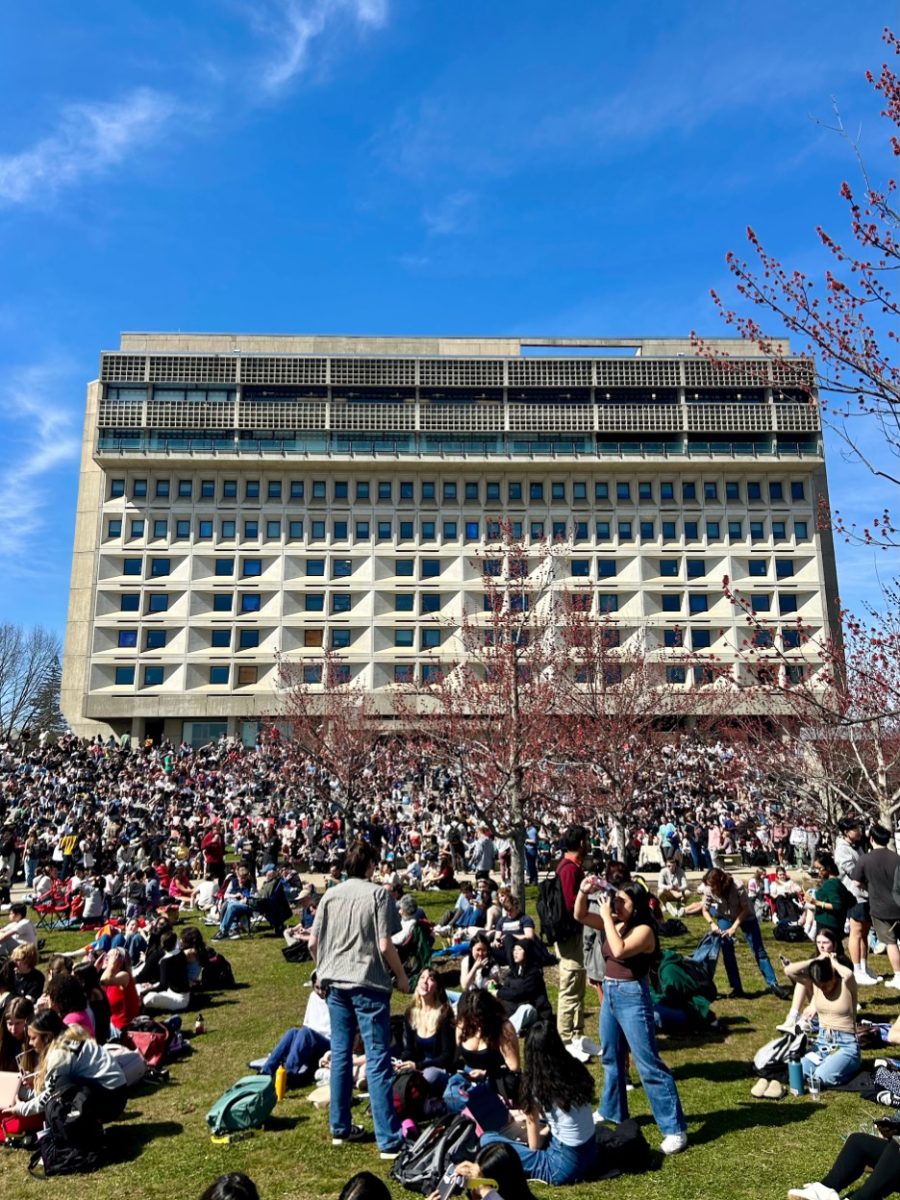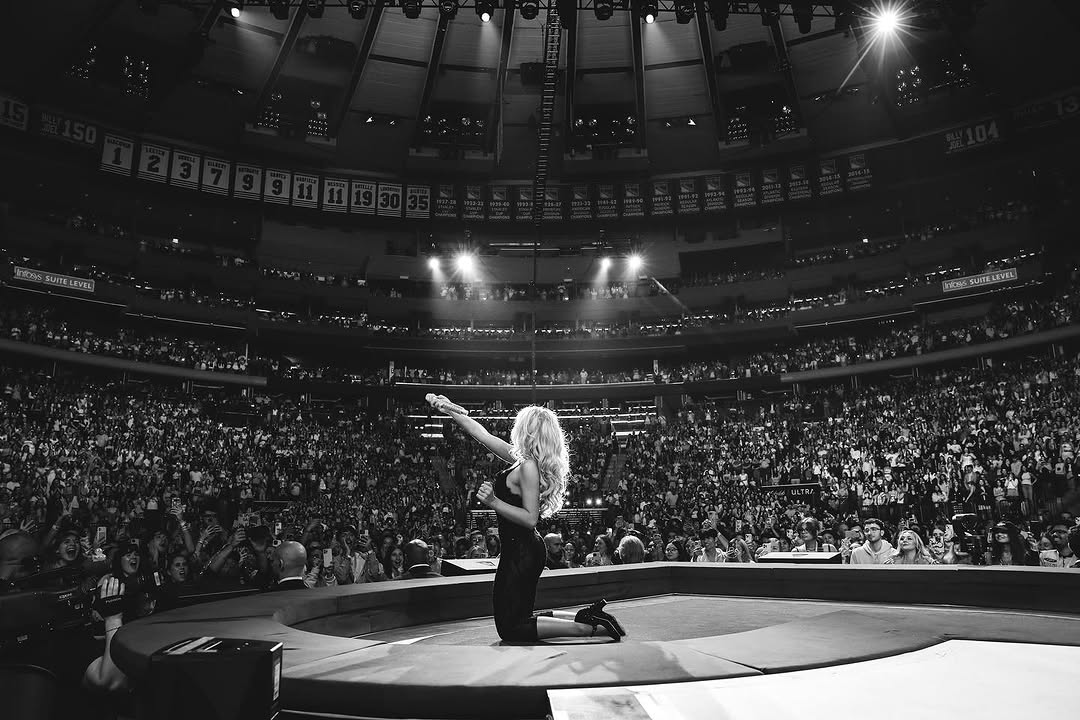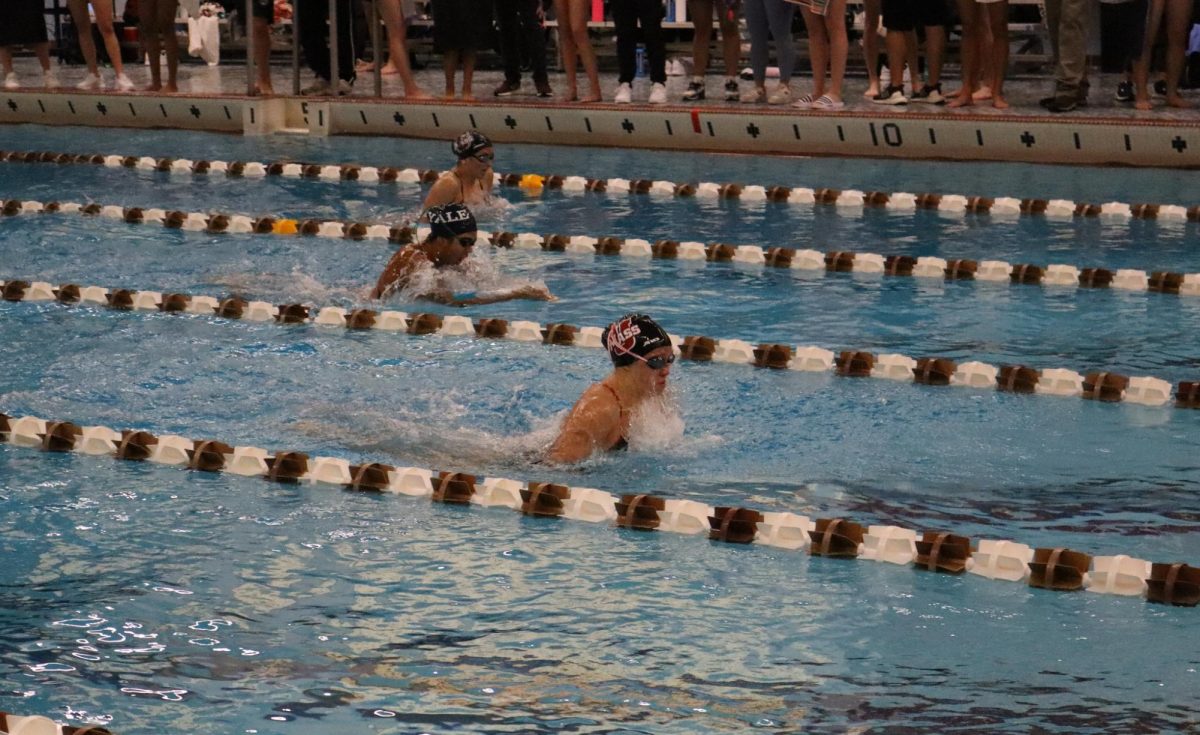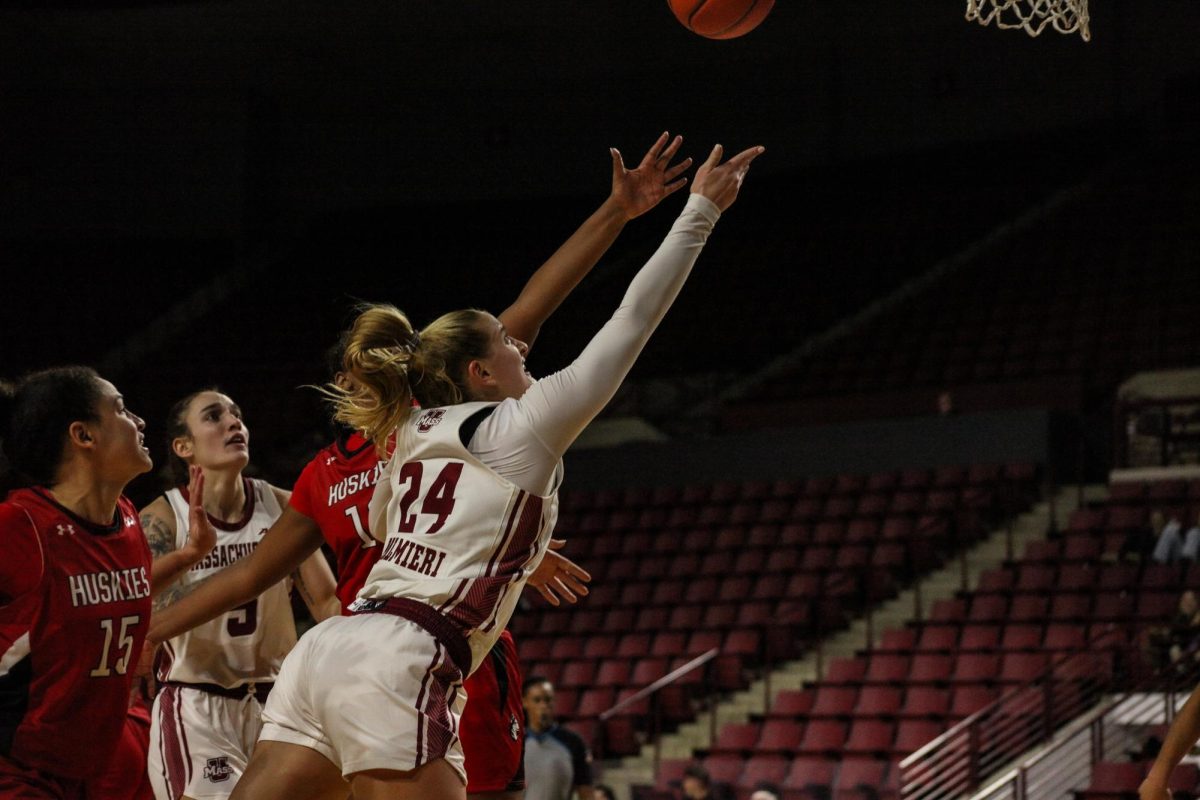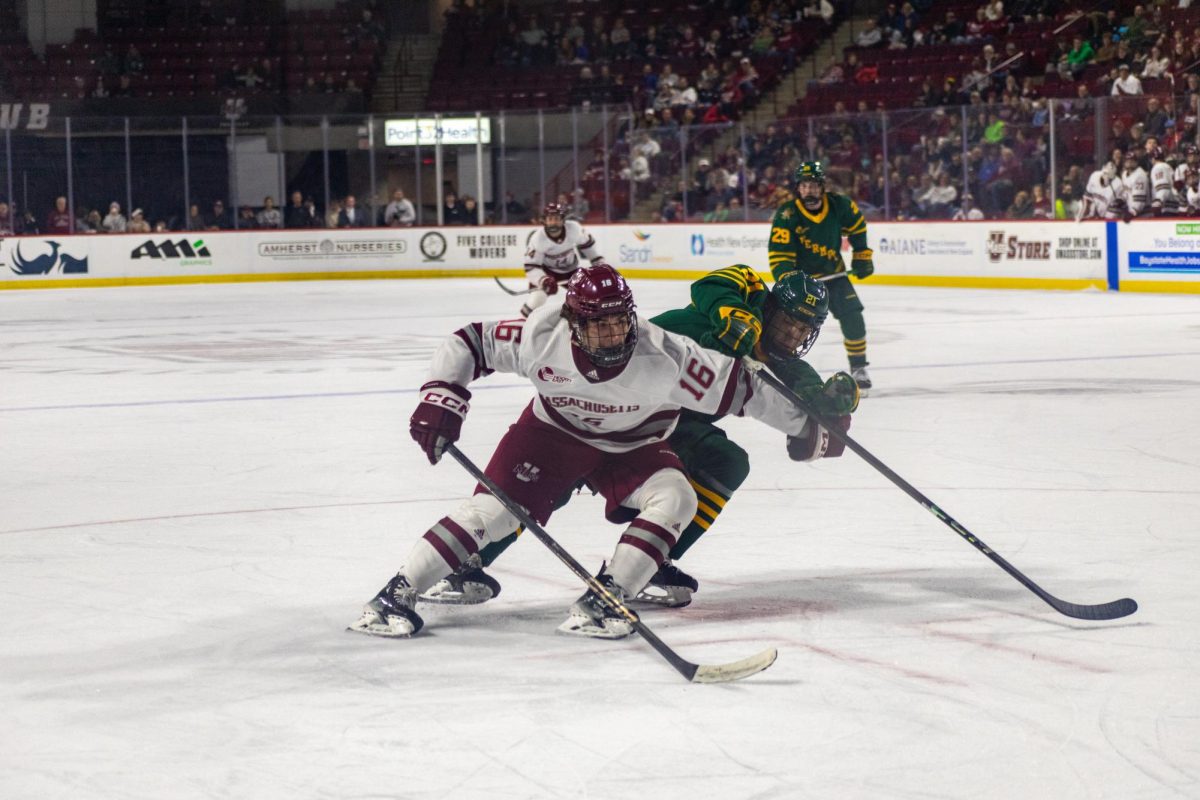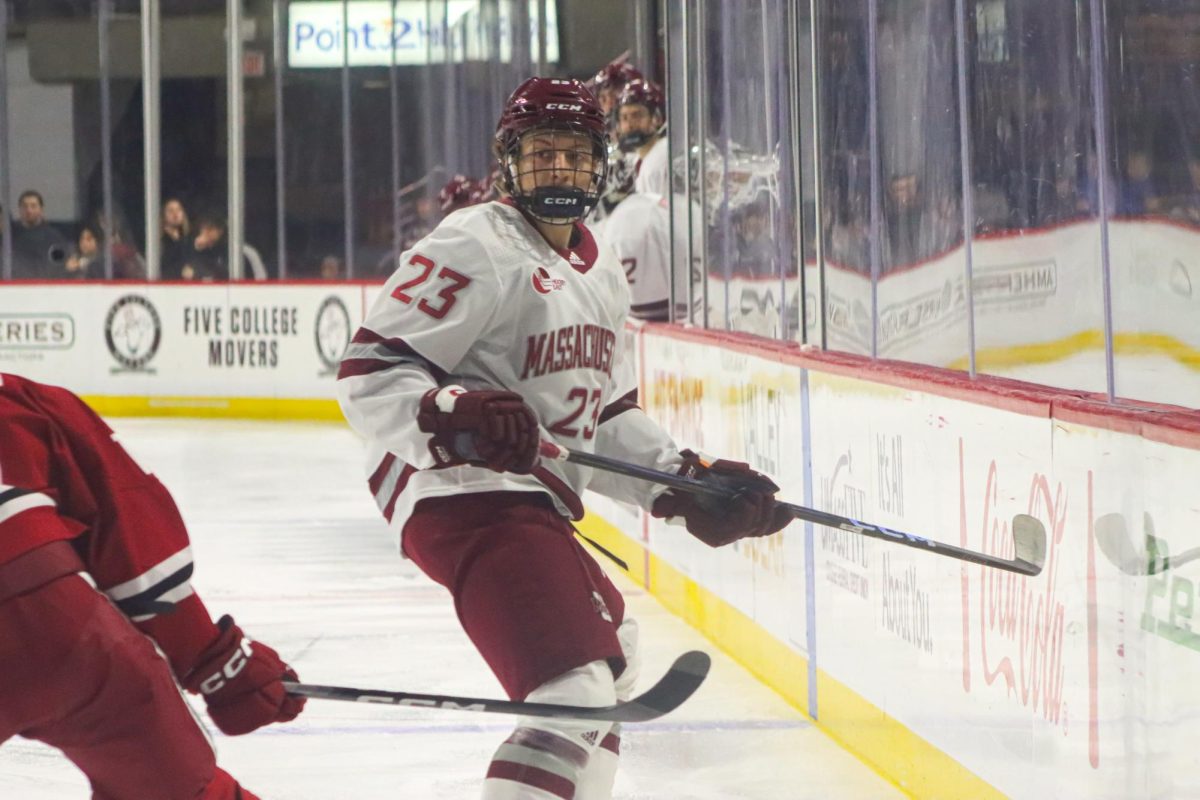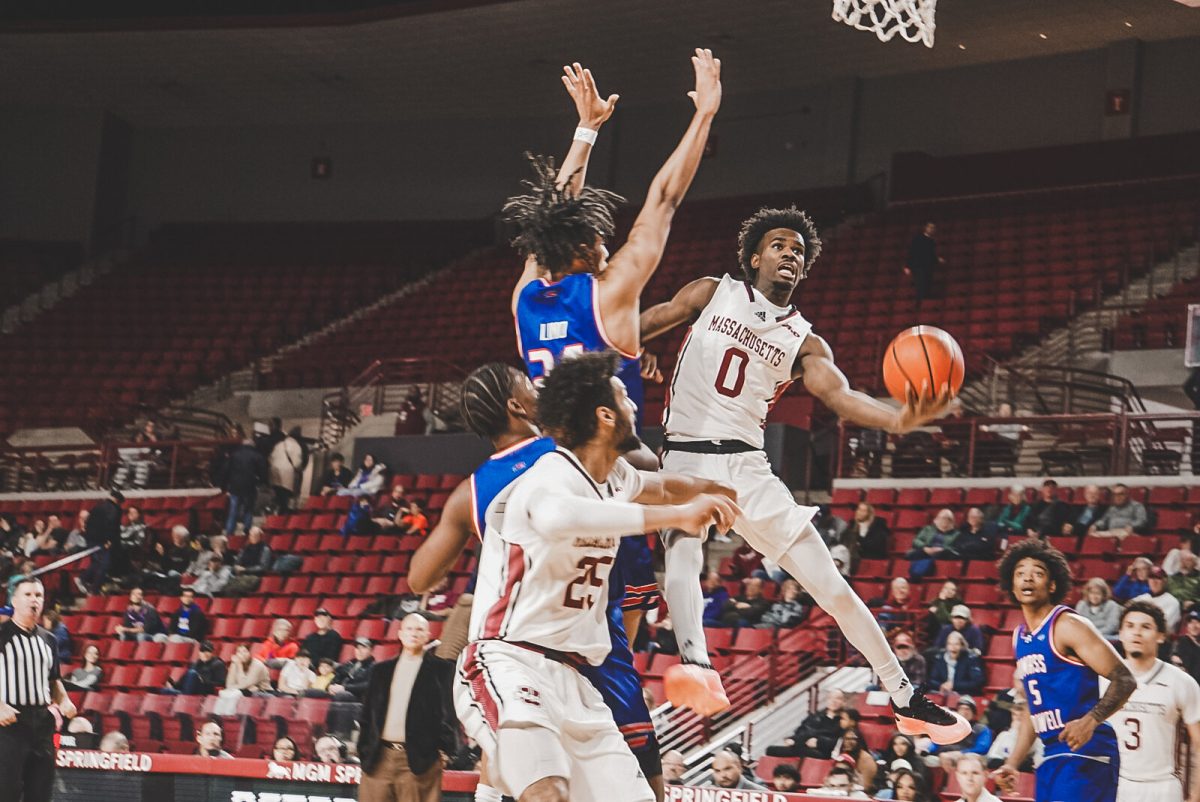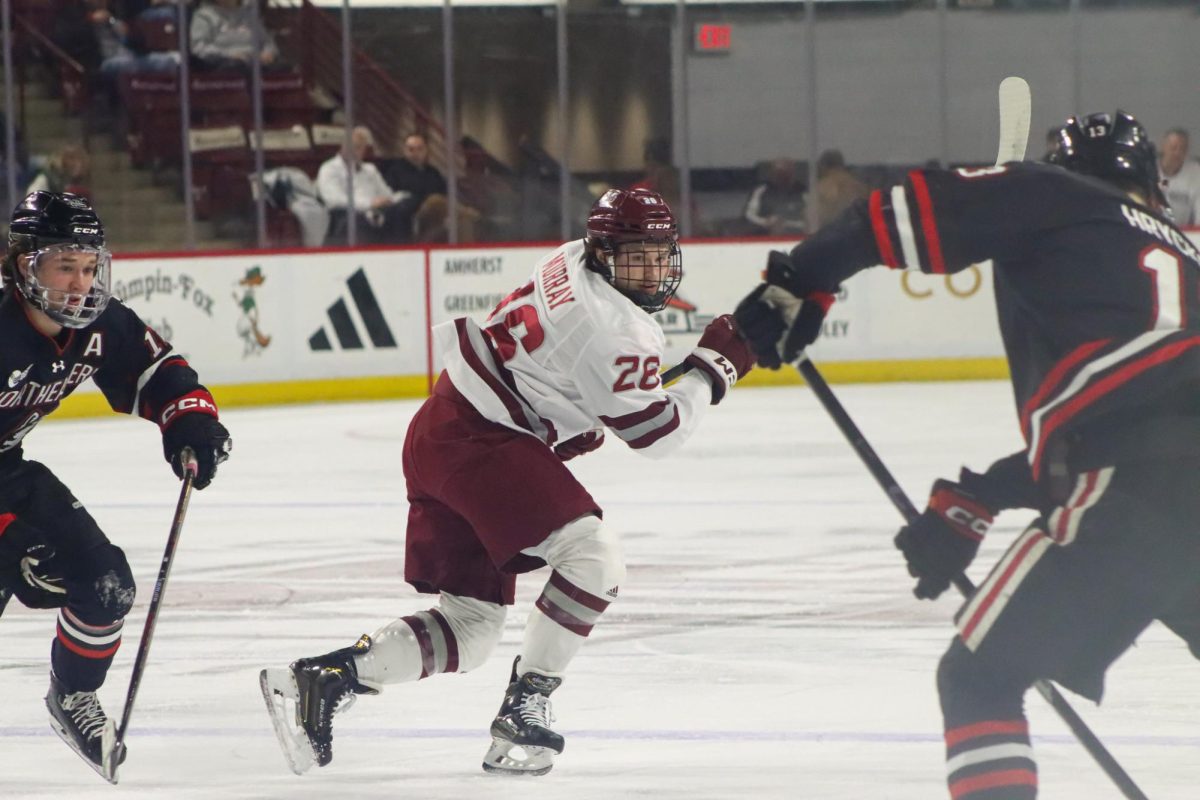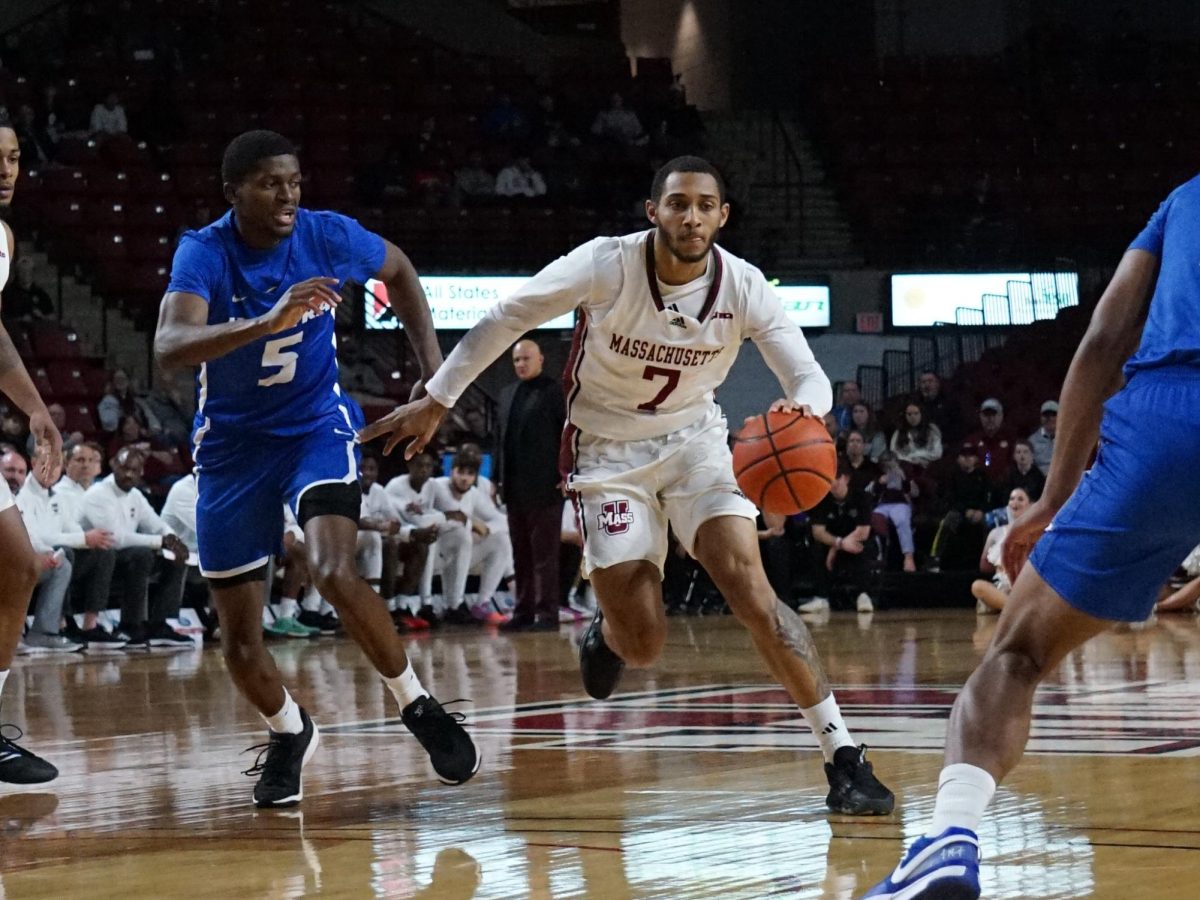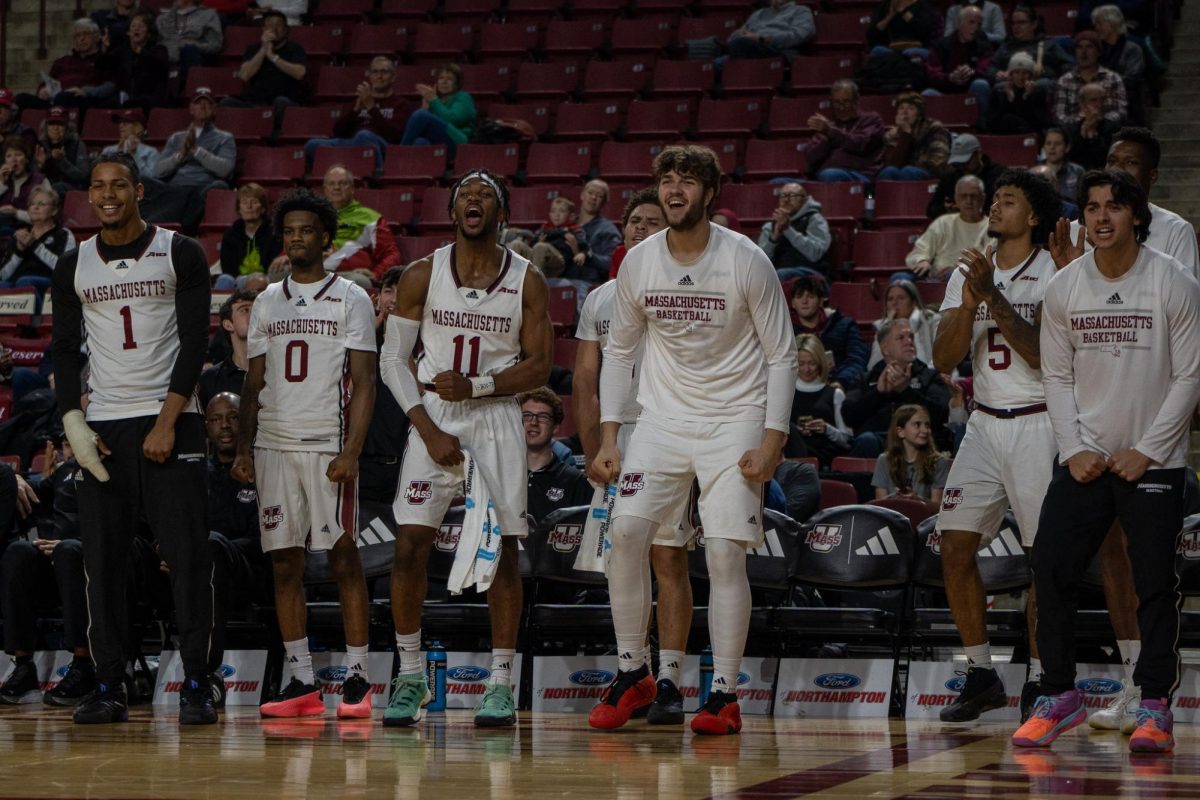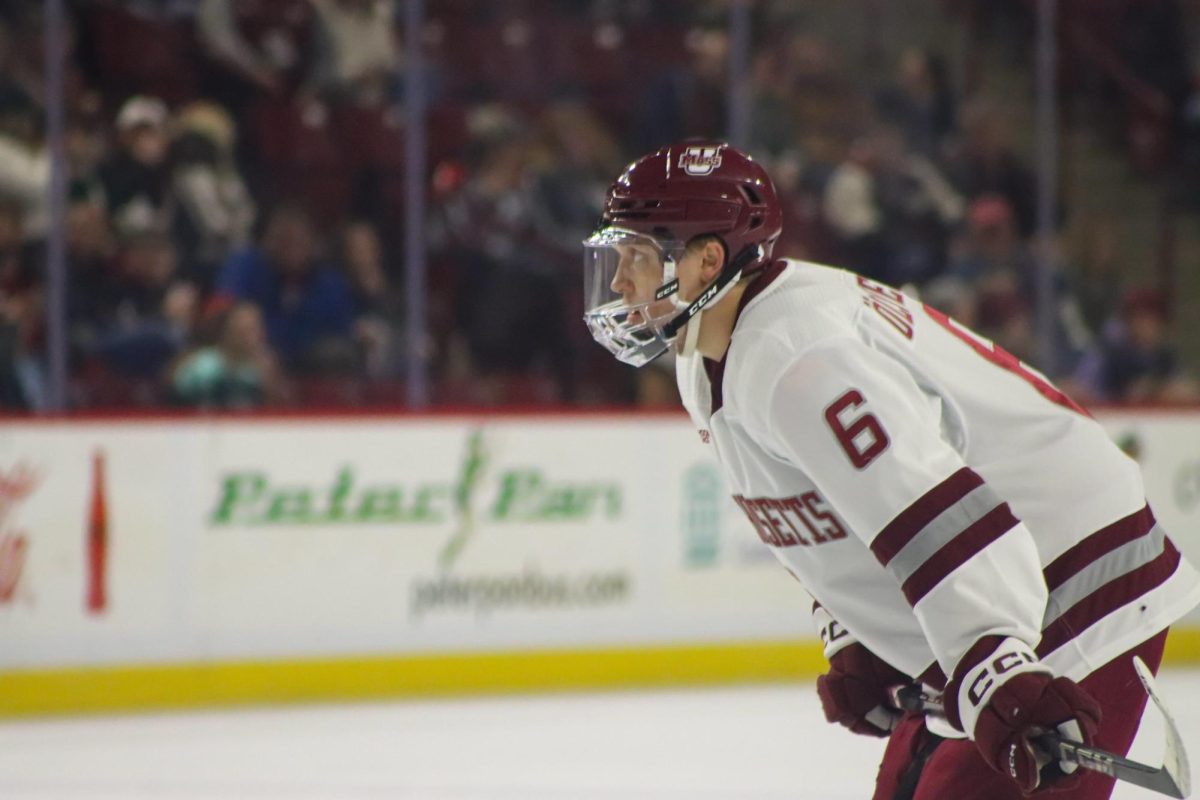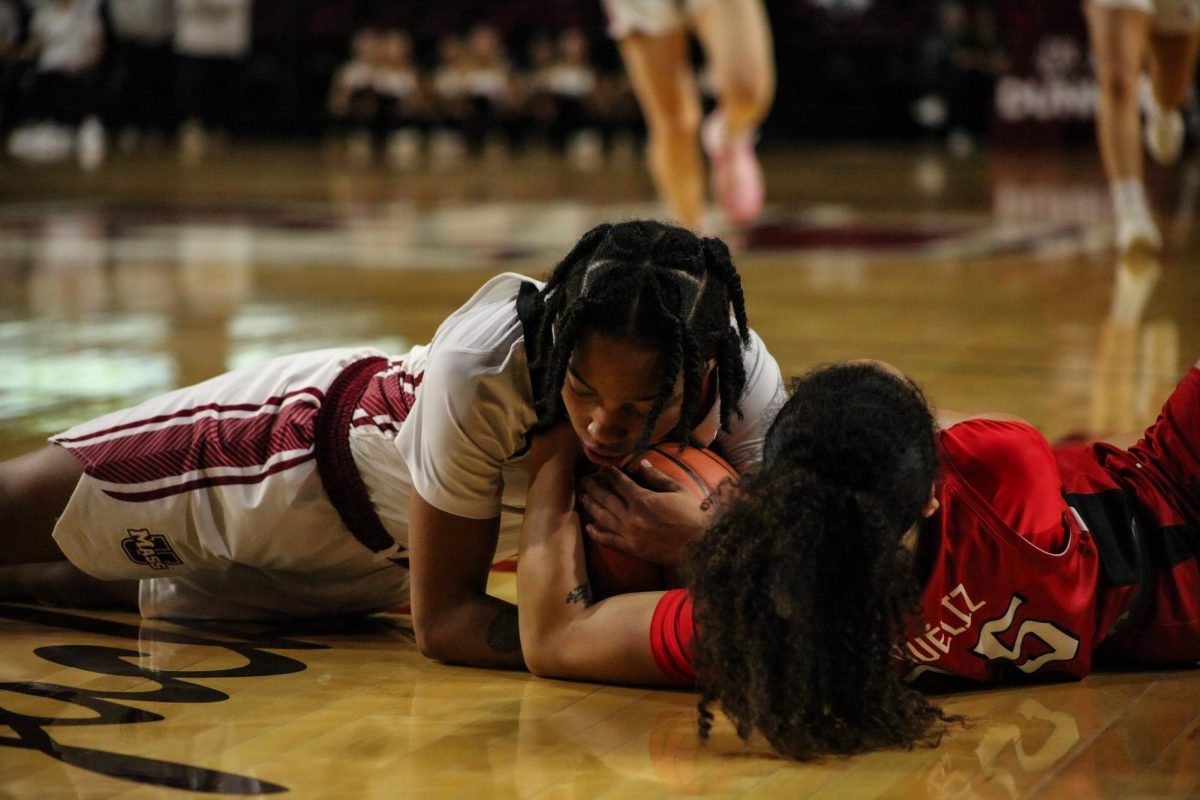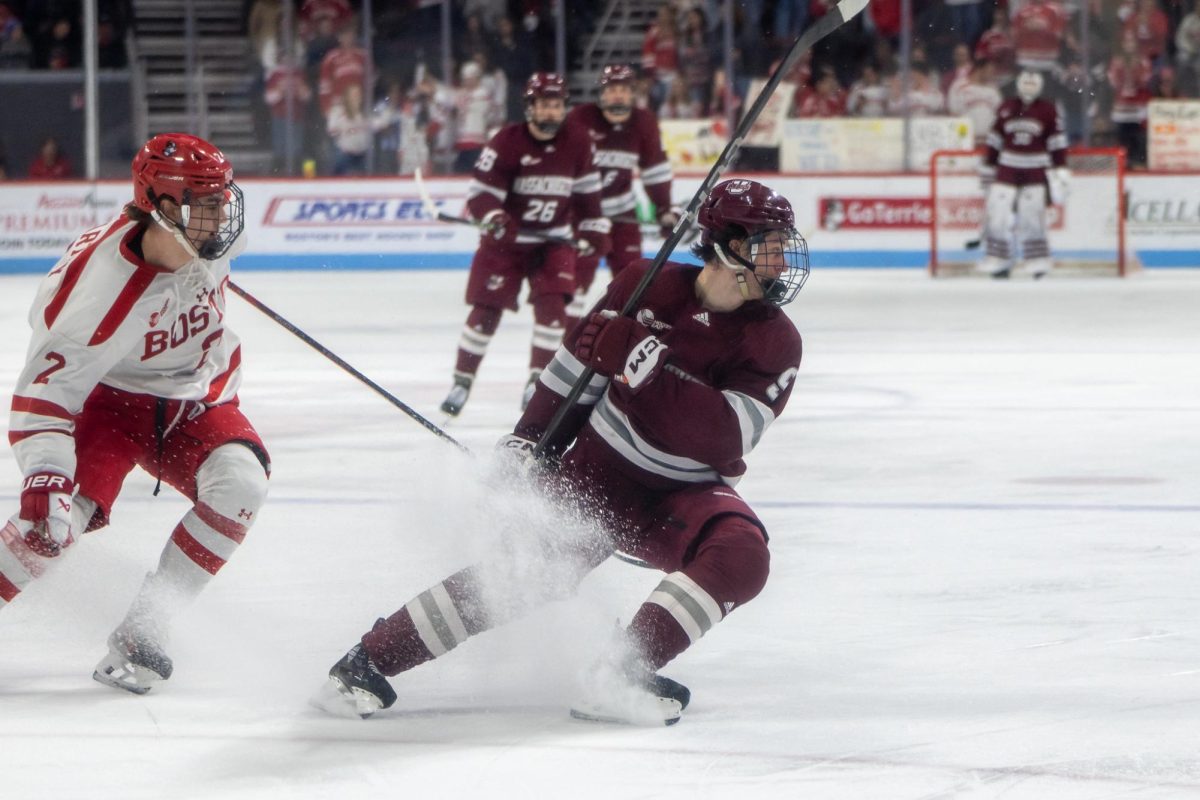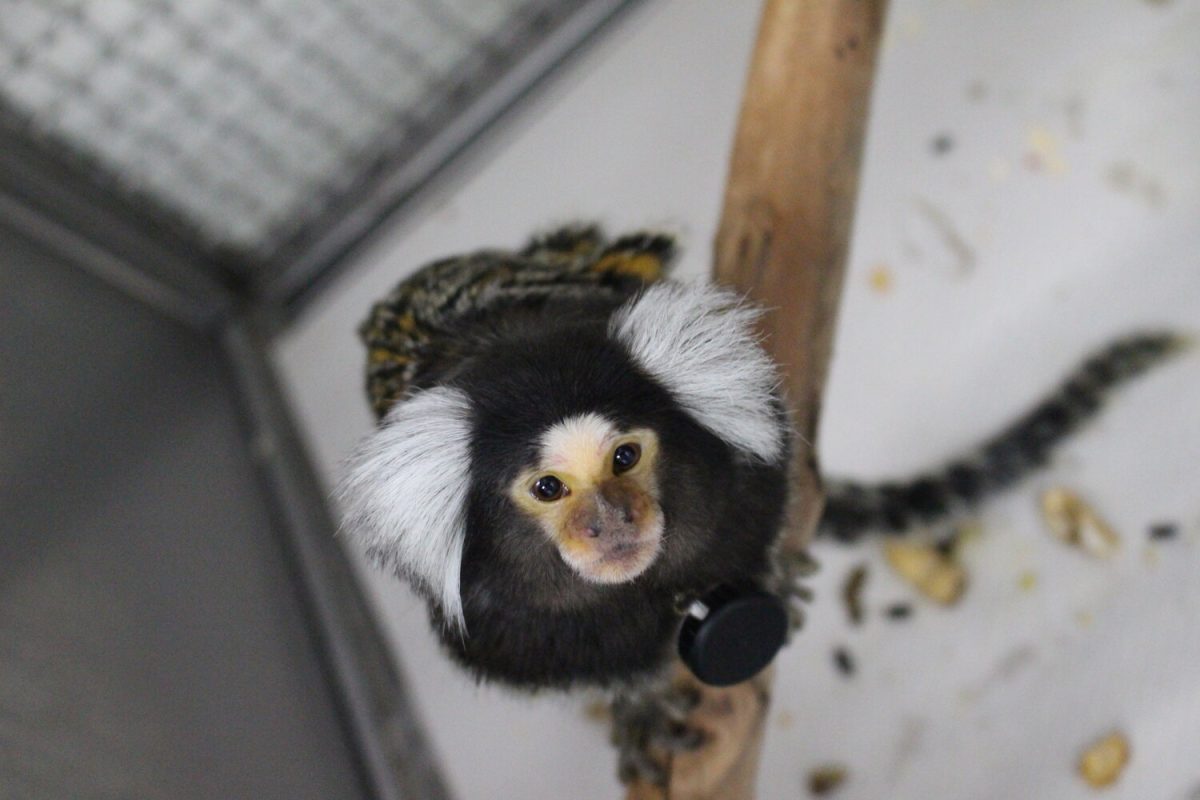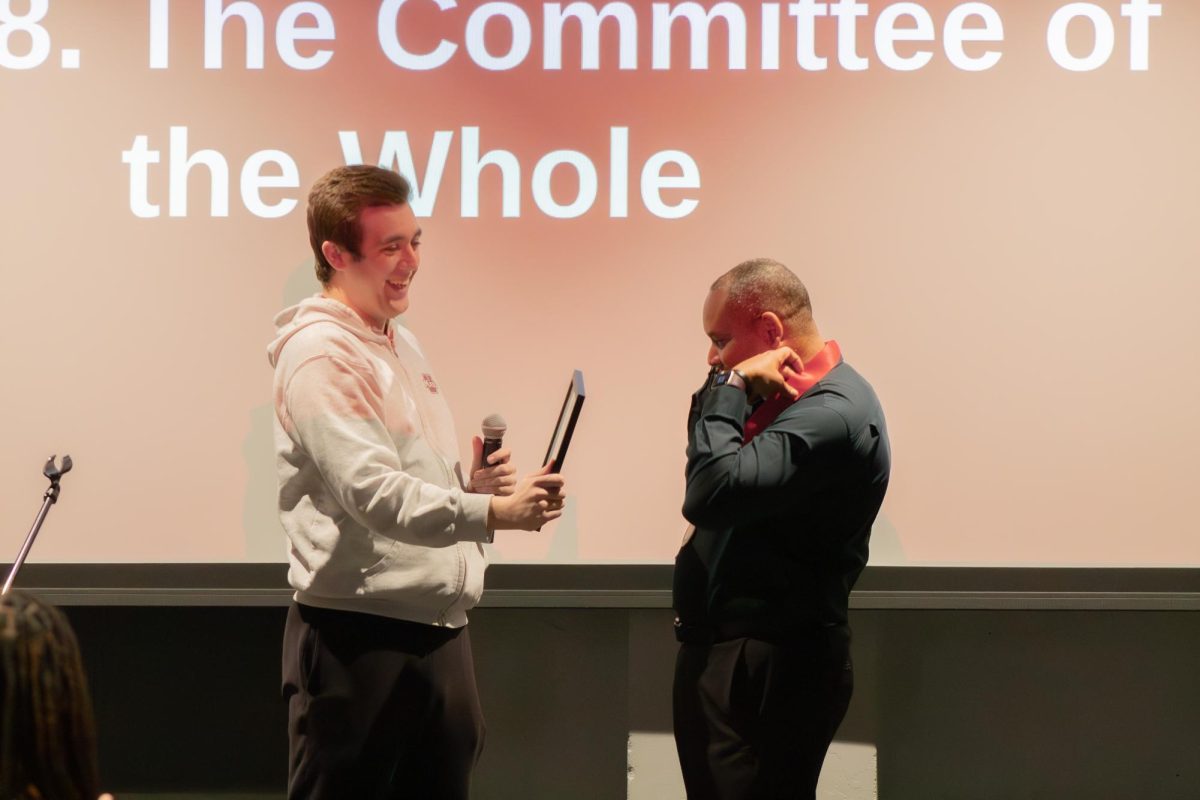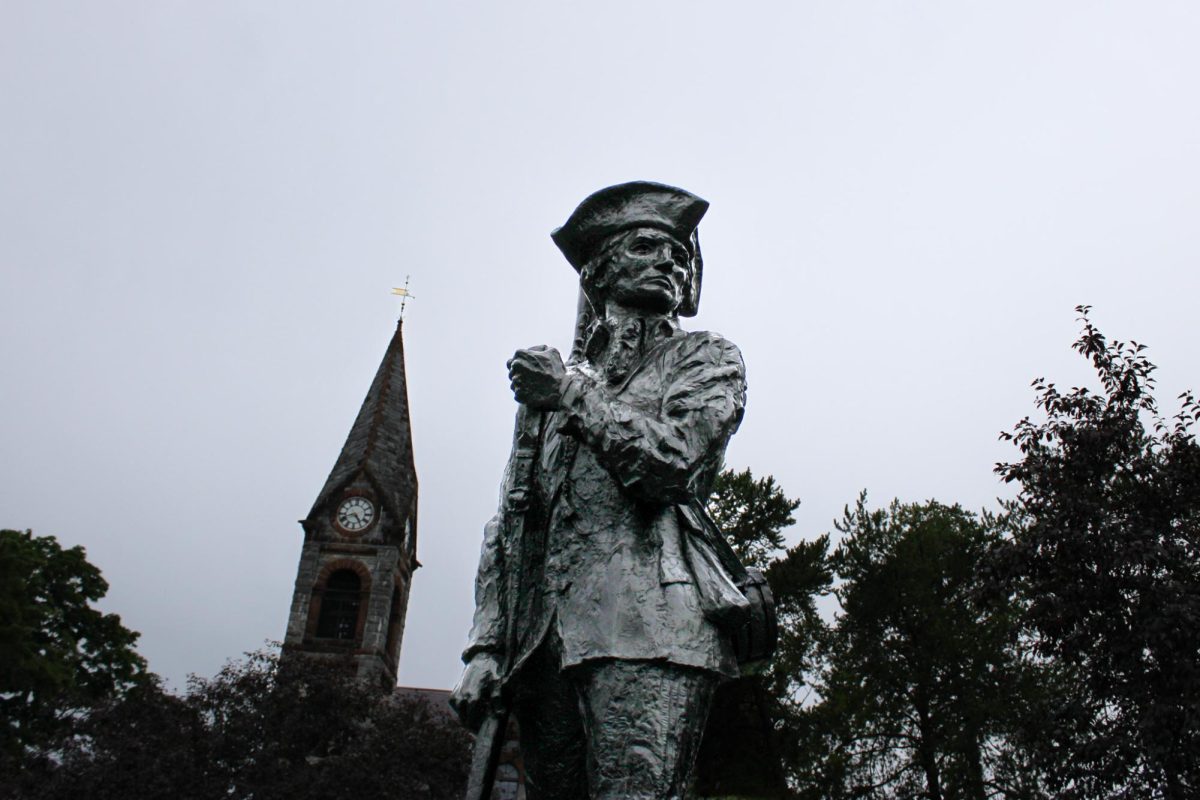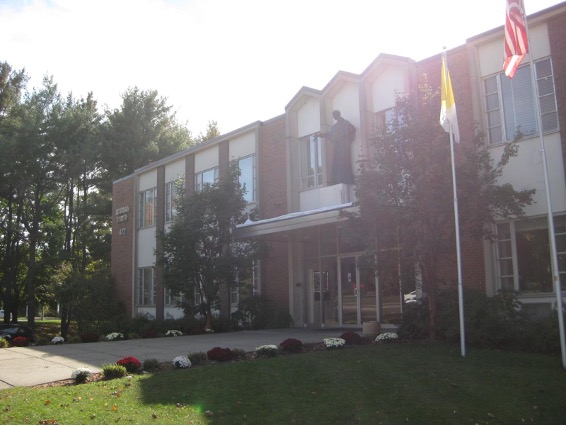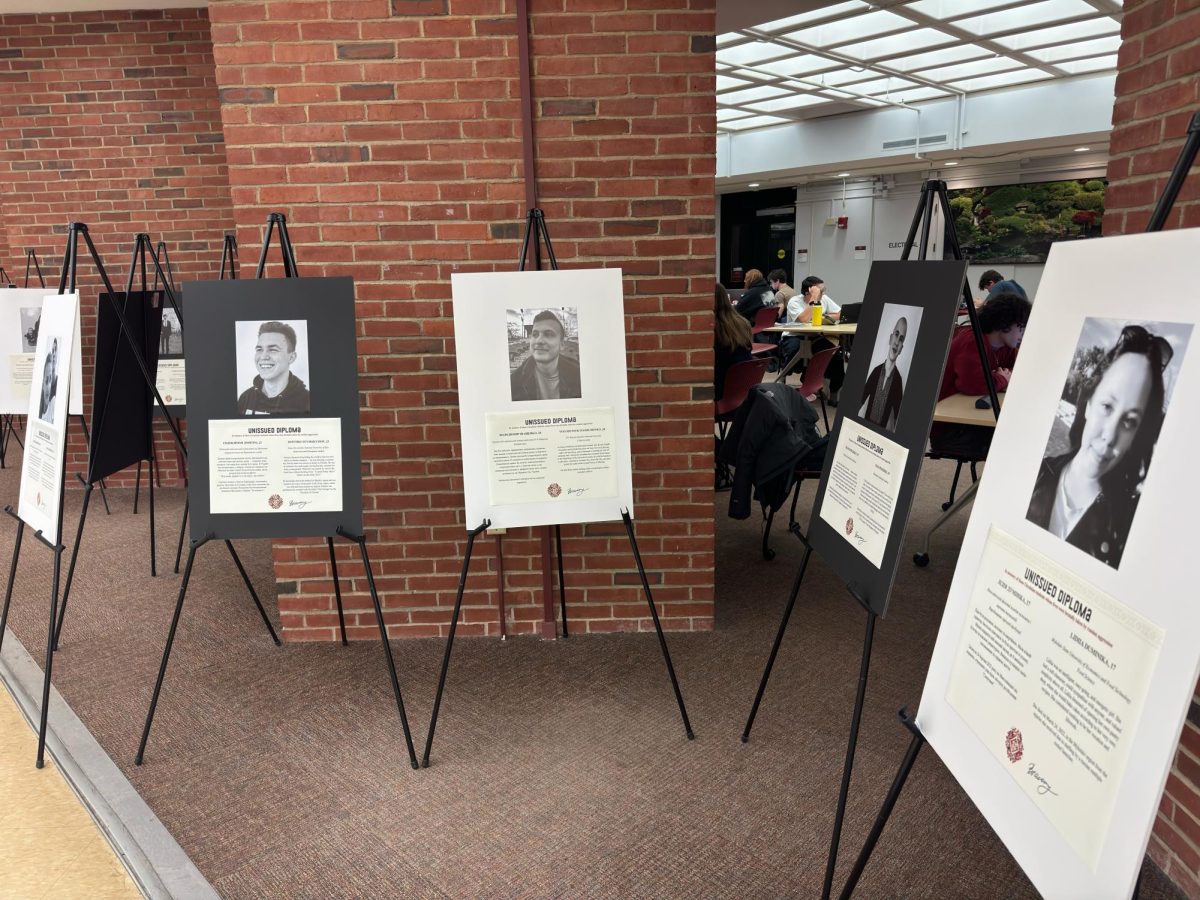Thousands of students, faculty and community members gathered at the University of Massachusetts’ Metawampe Lawn to witness the Great North American Eclipse on Monday, April 8.
The College of Natural Sciences (CNS) and the Department of Astronomy hosted the free event, which many attendees felt was the largest on-campus gathering since before the COVID-19 pandemic. UMass fell just outside the eclipse’s path of totality, but despite this, viewers could still observe the moon covering 95 percent of the sun.
Upon arrival, attendees received UMass-branded eclipse glasses from volunteers from the Five Colleges Astronomy Club to ensure a safe viewing experience. One such volunteer was Daniel Holden, a freshman mechanical engineering major. For Holden, the eclipse is a golden opportunity to share his passion for astronomy with the public.
“My favorite part about this was just seeing everyone gathered together and just seeing something really amazing astronomically to bring the community together,” Holden said. “I’m glad that I was here to see it. I was telling people as I was handing out the eclipse glasses that this is a once-in-a-lifetime thing.”
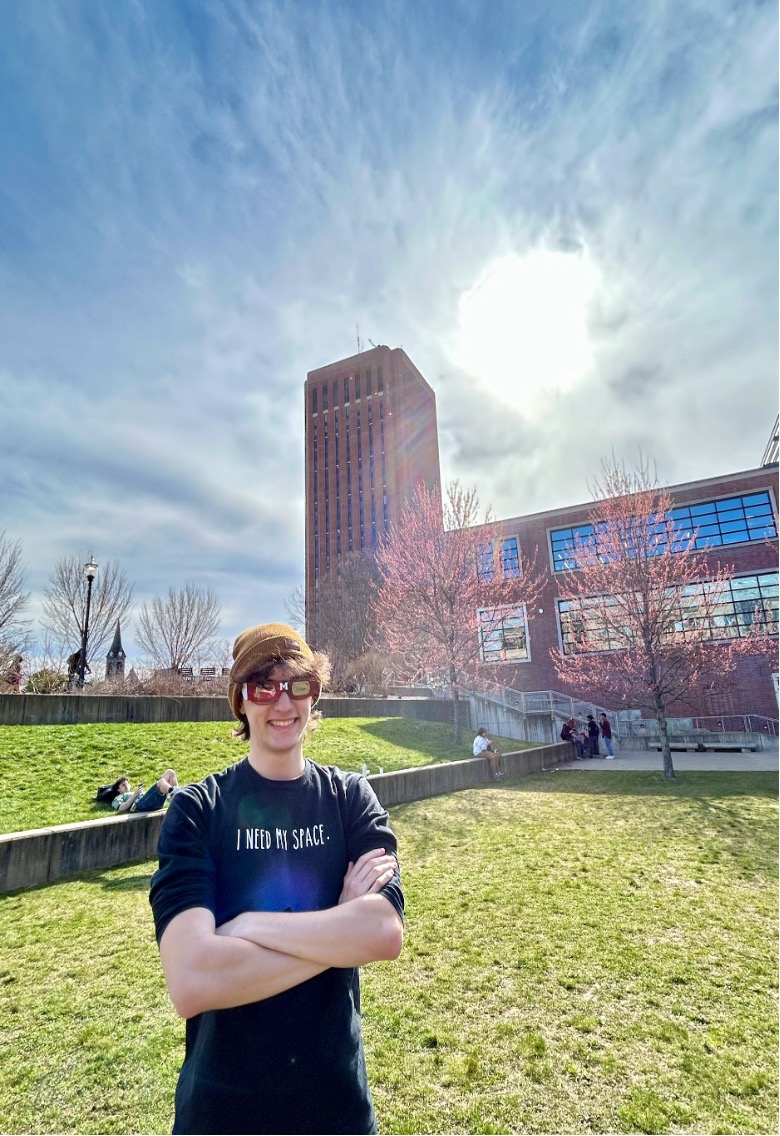
It’s been seven years since the last total solar eclipse in the contiguous United States. That eclipse, dubbed the “Great American Eclipse” by some media outlets, had a path of totality that cascaded west to east across the entire lower 48 states. For viewers in Massachusetts, approximately 65 percent solar coverage could be seen.
As for the next eclipse, the continental United States won’t witness another total solar eclipse until 2044, but don’t expect to see much in the Bay State. Only three states will experience totality – Montana, North Dakota and South Dakota, leaving Massachusetts with a sliver of solar coverage.
“It’s going to be a while before we see something of this magnitude again,” Holden said. “But I’m hoping that [the eclipse] will show people that there are so many amazing things done with astronomy. You’ll see stuff like this, and you don’t have to be an astronomy enthusiast to love it.”
The eclipse began around 2:15 p.m. Attendees were welcomed to the event with a playlist of eclipse-themed songs, including Bonnie Tyler’s “Total Eclipse of the Heart” and “Ain’t No Sunshine” by Bill Withers. At around 3:28 p.m., the eclipse reached its peak, and a thunderous roar of cheers and applause was heard across the entire lawn.

In addition to the Metawampe Lawn, UMass Astronomy used the Sun wheel on Stadium Drive as another designated viewing location. There, astronomy professors spoke to the many eclipse-goers about the awe-inspiring celestial phenomenon.
For UMass Astronomy, taking on an event of this scale was no easy task, according to Jason Johnson, CNS’s director of communications, marketing and web.
“More than a year ago, Daniela Calzetti, a professor of astronomy, started talking about this event and investigated getting a source for the solar eclipse shades,” Johnson said. “As you can imagine, as you approach the eclipse, demand really increased, so we bought the shades several months ago. They arrived in like January here.”

Johnson said that UMass Astronomy ordered approximately 30,000 eclipse glasses, enough to not only provide for on-campus events, but for surrounding communities as well.
“We were also able to have a surplus, and we donated solar shades to all the public schools and like ten surrounding towns. Every kindergartener through high school student got to view the eclipse because of UMass Astronomy, as well as Springfield, Holyoke, Northampton, Amherst Deerfield, Greenfield, Belchertown, Westfield, Sunderland—all of these school districts.”
As the sun peaked out from behind the moon’s shadow, the crowds dispersed; but for a brief moment in time, every member of the community could put aside their differences and come together in celebration of this once-in-a-lifetime experience.
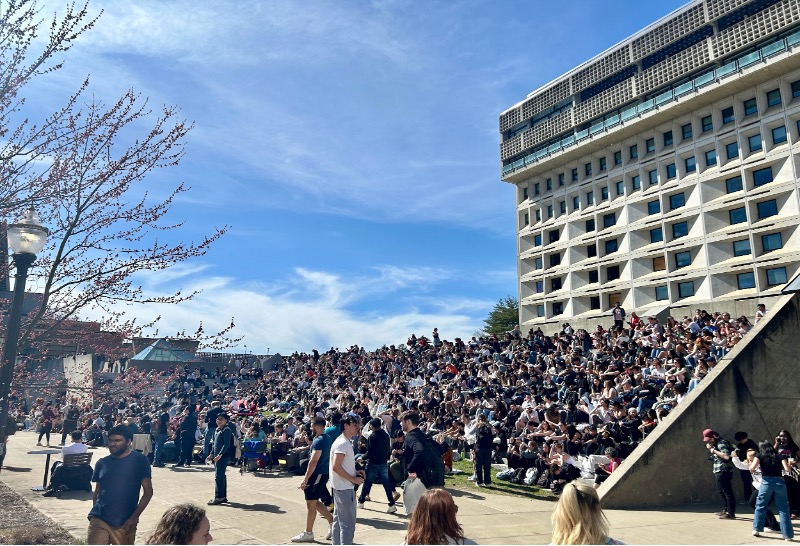
Nathan Legare can be reached at [email protected]

